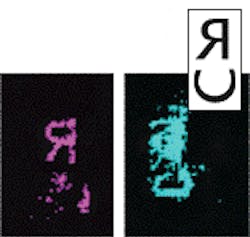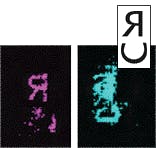Letters
Beam self-focusing seen even earlier
A letter from Ronald I. Miller (July, p. 9) corrected a letter by Roger P. Main (April, p. 36) concerning laser beam self-focusing. The work of Charles Townes and coworkers in 1964 was an early one on this topic, but not the first one. The late G. A. Askarian first discovered the phenomenon in 1962 (he was mentioned in Miller's letter as a Russian researcher—in fact, he was Armenian nationality in the Soviet Union). Askarian wrote the following in the English abstract of the otherwise Russian paper: ". . . a strong thermal, ionizing, and separating effect of ray on the medium can be used for setting up waveguide conditions of propagation and for eliminating divergency of the ray (self-focusing)."1
We dealt with self-focusing in atmospheric laser sparks in the early 1980s when Askarian drew our attention to his priority in this field.2 It is always amazing to see how immediately after the appearance of the first pulsed lasers that nonlinear optics was developed.
István B. Földes
KFKI-Research Institute for Particle and Nuclear Physics
Association Euratom
[email protected]
REFERENCES
- G. A. Askarian; Zh. Eksp. Theor. Fiz. 42, 1567 (1962).
- J. S. Bakos, I. B. Földes, Zs. Sörlei; J. Appl. Phys. 52, 627 (1981).
Method was used in millimeter-wave imaging
In "Fresnel lens yields three-dimensional measurements" (August 2002, p. 28) it was noted, "Researchers at RPI believe that they may have stumbled across a new and potentially useful method of three-dimensional (3-D) imaging."
We agree this method is potentially useful, but the main idea of Prof. Zhang's "new" tomographic method in the terahertz (THz) waveband is to use frequency properties of diffractive optics of the THz region—the dependence of focus distances on wavelength and the possibility of creating images on different wavelengths. Based on this principle it is possible to view a 3-D scene. But this physical principle was developed in Russia in 1987 in the millimeter wavelength band (75 to 140 GHz) and was published in several Russian books.1, 2 An example of such earlier results was also published in English in SPIE Proceedings in 2000.3
I wrote to Prof. Zhang about this and he replied that he was not aware of our work. We do not use the term "tomography" but physically our methods of 3-D millimeter-wave imaging are the same. So we believe Zhang's group was not first to study this and to offer this method of 3-D imaging, but he was the first in the submillimeter waveband.
Igor V. Minin
Novosibirsk State Technical University
[email protected]
REFERENCES
- I. V. Minin, O. V. Minin, Diffraction Quasioptics, 180, Moskow, InformTei (1992).
- I. V. Minin, O. V. Minin, Diffraction quasioptics and its applications, Novosibirsk, SibAgs., 308 (1999). (translated from Russian into English by IOP publisher and will be published in England in 2003).
- I. V.Minin(, O. V.Minin SPIE Proc., 4129, 616 (July 31, 2000).
We welcome your comments. Send letters to Carol Settino, Managing Editor, at [email protected]. Letters may be edited for length.

